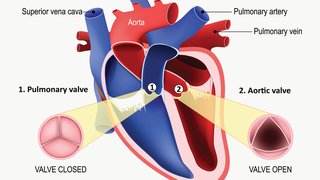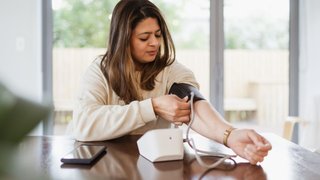
New reports continue to be published that emphasize the growing problem of Type 2 diabetes in the United States. Texas is no exception – across the nation, approximately 7 percent of adults have diabetes. In Texas, we’re at a whopping 10.9 percent. In Tarrant County, the number is 11.3 percent.
The presence of Type 2 diabetes is one of the most telling heart disease risk factors we can measure. And this disease, which used to impact just adults, is now interfering with the health of our kids.
These statistics are a sobering reminder to all Texans that we can prevent diabetes in the next generation – and improve the health of children who already have it – by taking the time to get screened and understanding our risk factors.
Let’s discuss how we can help kids decrease their diabetes risk and why diabetes prevention and management is vital for heart health.
Type 2 diabetes in kids is increasing
Many reports focus on the number of adults in the United States who have diabetes. What people aren’t talking so much about is in addition to the increasing numbers, the age at which it’s being diagnosed is increasingly younger. Type 2 diabetes used to be considered “adult diabetes,” and Type 1 diabetes was considered “juvenile diabetes” because of the age of onset and diagnosis.
But around 2008, Texas flipped the script. For the first time, the estimated number of kids and adolescents with Type 2 diabetes in Texas matched or exceeded the number of kids who have Type 1 diabetes. In 2012, almost 1 percent of high school students in North Texas had diabetes, and one in 10 had pre-diabetes. It’s a dramatic trend of more and younger cases.
These young people are now left to deal with a lifetime of cardiovascular risk that comes with Type 2 diabetes. The earlier the disease is diagnosed, the more absolute years of life are lost. If you’re diagnosed as a teen or young adult, you may have, on average, 10 or 15 years of life lost.
This crisis is a signal for parents in the Metroplex to take a proactive role in monitoring not only their own risk but also that of their kids. It’s also a sign that we, as cardiologists, need to become more aggressive with preventive care, starting at an earlier age.
How does diabetes hurt the heart?
Diabetes is often thought of as a disease that damages the eyes or kidneys. Patients hear horror stories of going blind or going on dialysis, and it’s very scary. These catastrophic events can happen, but they’re relatively rare.
In reality, the biggest concern with diabetes is cardiovascular risk:
- Heart attack
- Stroke
- Heart failure
- Atrial fibrillation
- Peripheral artery disease
- Cardiovascular death
For every patient who develops eye or kidney disease as a result of diabetes, there are 10 who have a heart attack or die from cardiovascular complications.
Type 2 diabetes in children and adults can harm the body without causing symptoms, such as increased thirst and frequent urination. That’s part of the reason that nearly a third of people who have Type 2 diabetes have not been diagnosed – they simply don’t know they’re sick. And people who have Type 2 diabetes nearly always have associated conditions that increase their risk for heart disease, including obesity, hypertension, and high cholesterol.
All of these conditions contribute to atherosclerosis (commonly known as hardening of the arteries). People who have diabetes are at four to five times greater risk for developing atherosclerosis, which blocks blood flow to the heart. When a blockage “pops,” the body reacts by putting a clot over it. If the clot forms inside the artery, it can completely block off the blood flow, causing a heart attack.
Determining your teen’s risk for Type 2 diabetes
The American Diabetes Association offers an online Type 2 diabetes risk assessment. I encourage you and your family to take the assessment as a starting point for thinking about your future heart health. The short test asks questions about common Type 2 diabetes risk factors, including:
- Sex
- Age
- Height and weight
- Family history
- Physical activity
- High blood pressure
This isn’t an all-encompassing test, but if you or your child score higher than “low risk” on the 1 to 10 scale, consider talking with your physician about how to prevent Type 2 diabetes, or how to manage the condition you may already have.
Your doctor can do a simple check of your hemoglobin A1C (a test that reflects blood sugar) to determine whether you have Type 2 diabetes. The American Diabetes Association recommends Type 2 diabetes screening every three years for at-risk children and teens age 18 and younger. Along with that, we’ll want to check your blood pressure and cholesterol levels, which almost always are elevated in Type 2 diabetes patients and contribute in a big way to overall cardiovascular risk.
How to help kids avoid Type 2 diabetes
To prevent Type 2 diabetes, or to keep it from getting worse, there are four main things we recommend our young patients and their families do:
- Get regular exercise. Most teens can get enough activity to maintain health by walking 30 minutes a day, four or five days a week. Take a family walk at an intensity where you’re breathing heavier but can still carry on a conversation. When the mood strikes, rev up the pace for increased cardiovascular benefits!
- Maintain a healthy diet. Contrary to popular belief, sugar is not necessarily the enemy for Type 2 diabetes. It’s really about eating more calories than your child’s body burns for energy – eating excess calories over time leads to obesity, and that leads to insulin resistance, where the body needs more insulin to manage the blood sugar, which can result in Type 2 diabetes, even in teens. Help them pack healthy snacks to avoid stops for nutritionally-poor foods such as fast food or sweets between activities.
- Maintain a healthy weight. Balancing diet and exercise to stay at a healthy weight can be tricky. Consider visiting with your child’s pediatrician or a dietitian to help your child find the right ratio of calories consumed and calories burned.
- Know your numbers. At-risk teens need to be aware of their blood pressure and cholesterol levels and manage them with healthy lifestyle changes and medication, if necessary. These factors are connected to the prevalence of Type 2 diabetes and overall heart health.
Type 2 diabetes is not a disease that will go away with a few doses of medication or a couple of laps around the track. Once you or your teen have it, you must manage it for life to maintain heart health. But losing weight and exercising can improve cardiovascular risk and, as a bonus, increase quality of life in so many ways, including overall happiness and the ability to enjoy more activities.
Please don’t wait to determine your – or your child’s – risk for Type 2 diabetes. With preventive care and healthy lifestyle changes, you and your family can live longer and healthier together.











